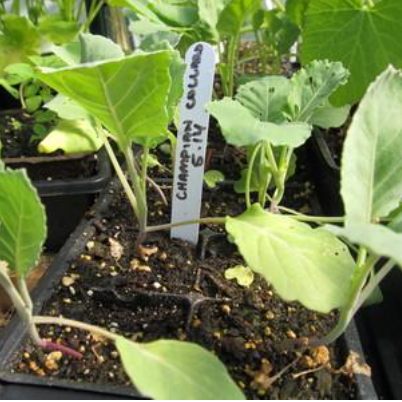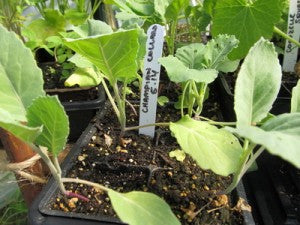
Sow What Now? Seeds to Sow for Fall
 As the garden grows, there is plenty to do just to maintain it--and always plenty MORE to prep for fall!
As the garden grows, there is plenty to do just to maintain it--and always plenty MORE to prep for fall!Happy summer solstice to all! Sweet sweet summer is here, one day early even. The solstice starts the clock for the fall planning and planting schedule in these parts. The longest day of the year means that the days just keep getting shorter from here on out. By the end of August you will start to notice that everything starts to slow growth. It's a race to the finish, growing food. But with a little sweat, planning and planting, the finish line yields months of delicious harvests.
Here is my personal garden to-do list for fall crop planting through September, plus notes:
1. Start the Three Sisters Garden: A Three Sisters Garden is a companion garden consisting of corn, squash and beans. My Three Sisters Garden will consist of a dry corn (a trial variety!), a dry bean shelling pole bean (another trial variety!) and a rare butternut squash (another trial variety!). (Stay tuned for our trial results!) This garden, if it thrives, will provide a lot a great food in the late fall and into winter. All these crops take at least 100 days from seed to harvest, so it's very important that the garden be plant ASAP.
2. Start indoors around June 20: broccoli, cauliflower, storage cabbage, collards, brussels sprouts, cucumbers, chard, rutabaga, fennel and kale. If you have a high tunnel or greenhouse, you can do another sowing of these crops about 10-14 days after this. Last year, I had cucumbers in October!
 ...for gorgeous plants like these in September. A Seed Library specialty, Piracicaba Broccoli, just prior to producing broccoli shoots.
...for gorgeous plants like these in September. A Seed Library specialty, Piracicaba Broccoli, just prior to producing broccoli shoots.3. Start outdoors around June 20: sweet corn, sunflowers, rutabaga, dry pole beans.
4. Start outdoors around July 1-15: bush-type dry beans, fall peas (you will have the best luck with snow peas), fennel, fall brassica crops. Peas are one tough fall crop! They hate the heat of the summer, and won't fruit in an early cold fall. I am sowing a small amount of Green Arrow Shelling Peas and will hope for the best! Fall brassica crops started directly outdoors will need to be thinned when they are 2-3" tall.
5. Around mid-July: transplant all the starts from number 2. Check on transplants daily for the first week or two. Baby them with water, organic fertilizer and row cover and/or shade cloth. The heat of mid-July is usually pretty intense.
6. Start outdoors by August 1: fall carrot crop, fall beet crop (these two usually follow garlic and onions; sow enough for fall eating and fall storing), fall heading lettuces, scallions, turnips. A trick when trying to get these seeds to germinate: after cultivating the soil and sowing the seeds, sprinkle the surface with a very, very sparse layer of straw. This will help cool the soil and keep it moist in between daily waterings until the seeds germinate. When the seeds have germinated, gently gather the straw away from the seedlings.
7. Start outdoors by August 15: radishes, especially the bigger daikon and misato rose, turnips (for smaller turnips with nice greens), bok choy, broccoli raab, lettuce, spinach, tatsoi, braising mix, and all other favorites fall greens. The idea behind these sowings is to have enough to eat when these crops are ready, but to also save the hearty, luscious greens for harvest through November, when the days are too short and cool for things to grow, but probably mild enough to keep these crops alive under heavy row cover.
8. In a greenhouse: By August 15: plant your brassica seedlings, and sow anything from number 7.
***
Tips and Comments
- Another great benefit to planning a fall harvest is food security. Since we never know when or where natural disasters or disastrous diseases might strike, having fresh plantings of seedlings around increasing your chances of harvest if a disaster strikes in the season.
- After early to mid October, the days are so short that most cold hearty veggies will cease to grow. They will stay alive, but won't put on new growth without additional heat or light. Make sure you leave some of your leafy greens big and lush so you can eat them through November or even December in a mild year. Cold hearty crops only need row cover through those months.
- When starting seeds indoors or out in the summer, make sure they are watered daily until germination, then keep them hydrated, especially during heat waves. Shallow roots dry out very quickly.
- Eat now and save for later: Make sure you eat your thinnings of beets, Asian greens and lettuces. Just one more way to be thrifty and extend your eating pleasures in the garden!
- If possible, don't transplant your seedlings when it's 105 degrees outside and bone dry. If a heat wave is only supposed to last a few days but your plants are ready to go in the ground asap, pot them up in bigger pots to keep them from stressing. If there is no relief in sight from the heat, transplant your seedlings in the evening, water them very well, and they will have a full 12 hours of coolness before the shock of the hot sun. (Check out our helpful video on more about potting up to buy time!)
Visit www.seedlibrary.org to view all we offer! Tell us in the comments below what you are planning for your fall harvest this year.










